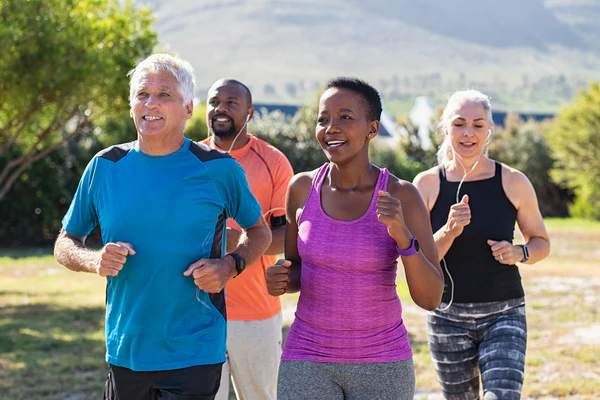If you have arthritis you’ll know that getting those stiff joints moving can be hard. Add to this the frustration of constantly being told you have to move those aching joints and you are left wondering what the use in it all is. Here, Clinical Programme Manager for Function Jigsaw Tom Heeley explains the reason you must keep those joints moving and how low-impact exercise is the perfect way to help reduce the pain and stiffness of osteoarthritis.
You’ve got to move it, move it.
With arthritis, the joint has been worn down, the smooth cartilage lining the joint will wear to such a degree as to be a bit like sandpaper. Sandpaper on sandpaper is not something you want going on in your joints. By keeping the joint moving you are keeping the range of moment in said joint. This, in turn, allows the synovial fluid (the body’s natural lubricant in joints) to distribute evenly on those rough surfaces and in turn improve movement. It also brings a host of new nutrients to the area.
Moving joints are like pumps.
Moving that pump clears away any debris and old synovial fluid and in turn brings in new, fresh fluid to the area. If you take someone who’s had surgery and they’ve not moved that joint for three weeks after surgery the fluids are all thick, there’s loads of swelling in the area. There are loads of inflammatory markers there to help the process which is great early on to aid the recovery process, but if you don’t move the joint that fluid becomes thick and it becomes a restricting factor to the joint’s mobility. By moving the joint that fluid then starts to move around and get cleared away through your lymph nodes and the rest of the vessels around the area and by doing that the body will then send new synovial fluid to the joint.
The perils of high-impact.
We know that with arthritic joints the space between joints becomes narrower. High-impact, heavy loading exercises cause the joints to get compromised and those two sandpaper edges rub against each other. Take running for example. It depends how fast you’re running but it could be 3 to 6 times your bodyweight you are putting through each knee because you’re almost hopping from one leg to another.
The key is low-impact exercise.
Low-impact exercise will be beneficial for building up strength around the joint, as well as keeping the joint moving. Swimming or even just walking in the water is a great low-impact exercise. The water will take some of the buoyancy and lift you a little bit out of the water so you’re putting less stress on the joints. At the same time, you’ve got the currents of the water moving against you, almost like a massage and that’ll help to move the synovial fluid and bring new fresh fluid to the area. By using low-impact you’re not creating that effect of the two joints coming together.
Think about simple steps to get joints moving.
Things like foam rolling in the correct areas around the joint that you’re struggling with or a tennis ball. It can be really beneficial for stretching the muscles around that area. The muscles might be protecting the joint from moving further and causing more damage but sometimes that’s just the body’s way of coping and not beneficial in the long run. Foam rolling, resistance band, trigger ball even something as simple as olive oil and self-massage can be beneficial. Going to a sports massage therapist and having some treatment around that joint to relieve some of the tension that the muscles might be creating – This can be an amazing first step to getting a stiff arthritic joint moving again and once you’re over that initial resistance you can start doing things yourself.
You can find out more about Function Jigsaw on their website and on their social media channels Facebook, Twitter and Instagram.



